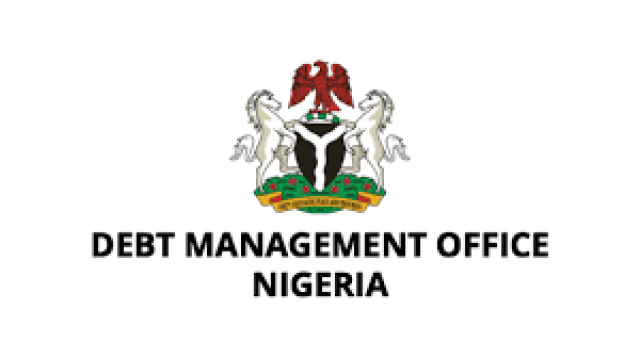At least 10 Nigerian states have cumulatively increased their domestic debt by N417.7 billion from the previous year, despite a notable rise in revenue from the Federation Account Allocation Committee, as indicated by a review of official data.
An examination of the Debt Management Office’s quarterly reports on subnational debt shows that Rivers, Enugu, Niger, Taraba, Bauchi, Benue, Gombe, Edo, Kwara, and Nasarawa expanded their total debt from N884.9 billion in Q1 2024 to N1.3 trillion in Q1 2025.
This marks a 47.2 percent year-on-year increase, raising concerns regarding fiscal responsibility and the long-term viability of state-level borrowing.
The data further reveals that the combined domestic debt of these 10 states grew quarter-on-quarter, from N1.26 trillion in Q4 2024 to N1.30 trillion in Q1 2025, an increase of N42.3 billion, which corresponds to a 3.4 percent rise within just three months.
This growth in debt occurs simultaneously with a substantial improvement in FAAC disbursements to states, boosted by higher oil prices, benefits from naira devaluation, and revenue liberated from the removal of the petrol subsidy.
However, the statistics suggest that instead of utilizing these funds to pay down debt, some states are increasing their borrowing. Rivers State led with a domestic debt of N364.39 billion as of Q1 2025, the highest among this group of 10. Although this figure remained constant from Q4 2024, it represented a year-on-year rise of N131.82 billion or 56.7 percent, compared to N232.58 billion in Q1 2024.
Enugu State's debt surged from N82.48 billion in Q1 2024 to N188.42 billion in Q1 2025, marking an increase of N105.95 billion or 128.4 percent. Enugu also experienced the largest quarterly growth, adding N69.14 billion between December 2024 and March 2025.
Niger State followed with a year-on-year increase of N57.68 billion, rising from N86.07 billion to N143.75 billion, a 67 percent hike, with a slight quarterly rise of N3.02 billion. Taraba State more than doubled its debt from N32.64 billion to N82.93 billion, reflecting a year-on-year increase of N50.29 billion or 154.1 percent, and a minor quarterly rise of N1.54 billion.
Bauchi State raised its debt stock from N108.39 billion to N142.40 billion, representing a year-on-year growth of N34.01 billion or 31.4 percent, although it experienced a small quarterly decrease of N1.55 billion.
Benue State’s debt increased by N13.09 billion year-on-year, from N116.73 billion to N129.82 billion, equating to an 11.2 percent rise, with an increase of N7.25 billion from Q4 2024 to Q1 2025.
Gombe State saw its debt rise from N70.81 billion to N83.66 billion year-on-year, adding N12.85 billion or 18.1 percent, but declining from N89.24 billion in Q4 2024, which indicates a quarterly drop of N5.58 billion.
Edo State, which had a debt of N72.38 billion in Q1 2024, saw an increase to N82.40 billion by Q1 2025, a rise of N10.02 billion or 13.8 percent, while it recorded the largest quarterly decrease among these 10 states, cutting its debt by N30.60 billion from N113 billion in Q4 2024. Kwara State’s debt climbed from N59.07 billion to N60.10 billion year-on-year, an increase of N1.03 billion or 1.7 percent, with a quarterly rise of N1.02 billion. Nasarawa State, the last on the list, increased its debt from N23.76 billion to N24.73 billion year-on-year, a rise of N968 million or 4.1 percent, though its debt dropped by N1.87 billion quarter-on-quarter.
Altogether, the combined domestic debt of these 10 states reached N1.30 trillion, representing 33.67 percent of the total N3.87 trillion domestic debt of all 36 states and the FCT as of Q1 2025. This reflects a significant rise from N884.9 billion reported by these same 10 states in Q1 2024, when they accounted for only 21.8 percent of the national subnational debt. In Q4 2024, their share was 31.8 percent.
The data indicates that borrowing among subnational entities is increasingly concentrated in a few states. While the overall domestic debt across all states and the FCT slightly decreased from N4.07 trillion in Q1 2024 to N3.87 trillion in Q1 2025, the uptick in these 10 states’ contributions implies uneven financial behavior. It is also worth noting that the figure for Rivers State in Q1 2025 was as of December 2025, according to the DMO report, stating, “The Domestic Debt Stock for Rivers State was as at December 31, 2024.” The debt figure for Rivers from Q1 2024 was reported as of March 31, 2023, elucidating the drastic increase observed in this period, and highlighting the state's slow release of updated figures to the DMO.
Conversely, Enugu’s rapid accumulation of debt—more than doubling within a year—has raised concerns. Although it remains uncertain what projects this new borrowing finances, the magnitude of the increase warrants examination. For Niger and Taraba, which also exhibited notable increases, the challenge lies in ensuring these borrowed funds yield tangible developmental results, with Taraba’s year-on-year growth of 154.1 percent being the most significant in percentage terms.
Meanwhile, states like Gombe and Edo are exhibiting some levels of fiscal prudence, having decreased their debts quarter-on-quarter. Notably, Edo reduced its debt by over N30 billion over three months, possibly reflecting repayment efforts or improved debt management. Analysts are apprehensive that neglecting to utilize higher allocations for debt reduction could pose future challenges, especially if revenue decreases or interest rates spike.
There are also worries about a potential crowding-out effect, where states' debt obligations increasingly consume their monthly allocations, leaving less available for capital and social expenditures. States with limited Internally Generated Revenue face heightened risks as they heavily rely on FAAC for their financial wellbeing.
Report indicated that seven states allocated an average of 190 percent of their Internally Generated Revenue for debt servicing in the first quarter of 2025. Data from the Q1 2025 Budget Implementation Reports for Bayelsa, Adamawa, Benue, Niger, Kogi, Taraba, and Bauchi indicates that debt service expenditures in each of these states surpassed their IGR, in some instances by over 300 percent.
This trend, when contrasted with figures from the prior quarter (Q4 2024), also signifies a sharp increase in debt service costs, soaring approximately 51 percent across the reviewed states.
It could be noted that these seven states collectively spent N98.71 billion on debt servicing in Q1 2025, representing a dramatic climb of N33.48 billion or 51 percent compared to the N65.24 billion recorded in the previous quarter.
Director and Chief Economist at Proshare Nigeria LLC, Teslim Shitta-Bey, cautioned that the intensifying debt burden on Nigeria's subnational governments could threaten their fiscal stability in forthcoming years.
He emphasized that many state governments, along with the Federal Government, have struggled to manage their balance sheets effectively.
Shitta-Bey remarked, “The challenge is that most governments, including the Federal Government, are unable to manage their financial health properly. While borrowing may seem like a straightforward way to manage operations, it isn't inherently a viable solution.”
He argued that borrowing shouldn't automatically be the go-to strategy for governments. “Governments could explore longer-term debt structures that are akin to equity, which could prove more advantageous over time,” he clarified.
He also advocated for a thorough register of national assets to assist states in capital generation. Citing the National Stadium, which has been underutilized for major events, he criticized the lack of engagement with state revenue bonds, which were intended for revenue generation. “States must prioritize raising revenue bonds instead of relying on general obligation bonds,” he asserted.




















